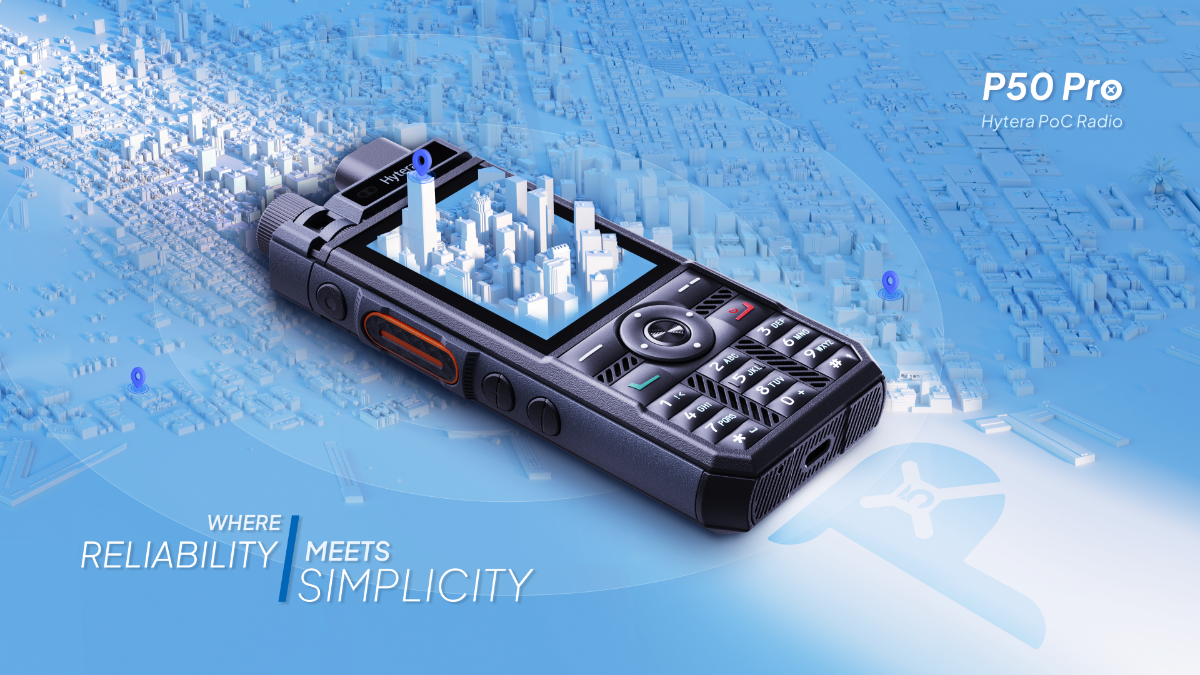Understanding PoC Radio: How It Works and Why It Matters
PoC & MCS
When you think of a walkie-talkie, what comes to mind? A bulky device with limited range? Static-filled conversations? Push-to-talk over Cellular (PoC) radios are rewriting that story — and bringing team communication into the cloud-connected age.
What is PoC Radio, Really?
PoC stands for Push-to-Talk over Cellular, and it's exactly what it sounds like — instant voice and video communication that travels not through radio frequencies, but over cellular networks like 3G, 4G, 5G, or even WLAN.
Imagine pressing a button and speaking to your entire team, whether they're across the building or across the country. That's the power of PoC radios. No need for base stations, frequency licenses, or complex repeater setups. Just connect, press, talk.
At Hytera, we've seen how PoC technology transforms the way frontline teams communicate. Our P30, P5 series, and PNC380 PoC radios are designed to deliver this seamless experience — with smart features built around real-life needs.

So… How Does It Actually Work?
Let's break it down — in simple terms:
1. Your voice is captured by the PoC radio (say, Hytera P30, with its 36mm speaker for crystal-clear audio).
2. The voice is converted into digital data packets.
3. These packets are sent over cellular networks or WLAN to a centralized PoC platform server.
4. The server routes your message instantly to your teammates' devices — whether they're using the P5 series in the warehouse, the PNC380 on patrol, or checking in from the road.
In short, it's like a hybrid between a walkie-talkie and a mobile messaging app — only faster, more reliable, and built for the realities of industries like logistics, security, construction, and more.
Why Does It Matter?
Traditional two-way radios are still essential communication tools across many industries — especially in scenarios that demand private network reliability, short-range instant talk, and mission-critical resilience.
But when teams need to communicate across wider areas, coordinate between cities, or integrate with centralized platforms, PoC radios step in to fill the gaps that conventional radios can't always cover.
Here's how PoC complements traditional radios:
• Wide-Area Coverage
By leveraging public networks, PoC radios offer seamless connectivity — locally, nationally, or even globally — without the need for repeaters or base stations.
• Quick Deployment
No frequency licensing, no infrastructure buildout. Just insert a SIM card or connect to Wi-Fi, and you're ready to go.
• Smarter Dispatch and Management
Centralized PoC platforms allow for talk group configuration, user management, real-time location tracking, voice playback, and more.
• Beyond Voice
PoC radios like Hytera's P30, P5, and PNC380 also support multimedia messaging, GPS tracking, task assignment, and remote video, bringing more situational awareness to team operations.
PoC isn't here to replace traditional radios — it's here to extend their reach and enhance communication flexibility, especially for dynamic industries like logistics, private security, public services, and field operations.

Final Thoughts
From real-time voice to location-aware task tracking, PoC is becoming essential. With solutions like Hytera's P30, P5, and PNC380, teams can communicate clearly, respond faster, and stay connected — wherever work takes them.
3





